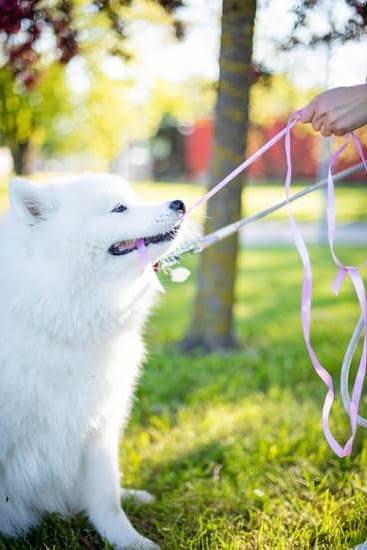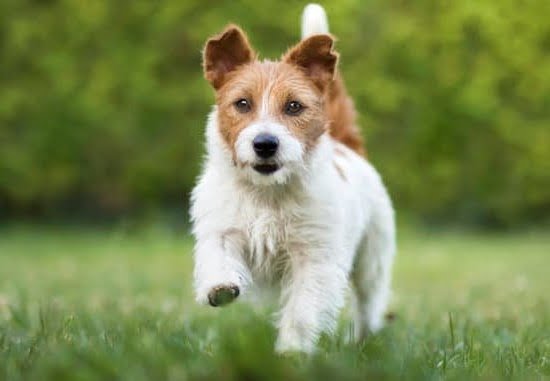Are you wondering how old to start gun dog training? Training a gun dog is a rewarding and fulfilling experience, but it’s crucial to start at the right age to ensure successful results.
In this article, we will explore the ideal age for beginning gun dog training and the significance of proper timing. We will also delve into the various aspects of training, from early socialization to advanced techniques, to help you understand the importance of starting gun dog training at the right age.
When it comes to gun dog training, timing is everything. The age at which you start training your gun dog can have a significant impact on their development and behavior. In this section, we will discuss the optimal age to commence gun dog training and the various factors that should be taken into consideration when determining the right time to start.
Early socialization plays a crucial role in shaping a well-rounded and well-behaved gun dog. It not only helps them become accustomed to various stimuli but also lays a foundation for their training. We will explore the benefits of early socialization for gun dogs and its impact on their overall behavior and response to training. Additionally, we will discuss how proper socialization can contribute to a successful and effective training experience for both you and your gun dog.
The Ideal Age
The age at which to start gun dog training is a crucial factor that can greatly impact the success of the training process. It’s important to consider the physical and cognitive development of the dog, as well as their ability to focus and follow commands. Here are some key points to consider when determining the ideal age to start gun dog training:
Factors to Consider:
1. Breed: Different breeds mature at different rates, so it’s essential to consider the specific breed of your gun dog when deciding on the optimal age to start training.
2. Physical Development: Gun dogs need to have developed physically before starting intense training, which usually occurs around 6-8 months of age for most breeds.
3. Socialization: Early socialization plays a significant role in a gun dog’s overall behavior and adaptability, so it’s important to expose them to various environments and experiences from a young age.
Ideal Age Range:
– The ideal age range to start gun dog training is typically between 6-14 months old, depending on the breed and individual development of the dog.
– It’s crucial not to rush the training process and ensure that the dog is mentally and physically ready for the demands of gun dog training.
Training Considerations:
When starting gun dog training at an early age, it’s important to focus on basic obedience commands, gentle introductions to hunting scenarios, and positive reinforcement techniques.
It is recommended for individuals interested in embarking on this journey with their pet obtain advice from professional trainers who specialize in working with gun dogs before commencing any formal activities.
By taking these factors into consideration and being mindful of your pup’s individual development, you can set your gun dog up for success in their future hunting endeavors.
Early Socialization
Socialization helps to shape a gun dog’s temperament, confidence, and ability to adapt to different situations, all of which are essential for successful training. Exposing young dogs to different stimuli such as sights, sounds, smells, and surfaces can prevent them from developing fear or aggression towards unfamiliar objects or situations later in life. Proper socialization also lays the foundation for building a strong bond between the dog and its owner, fostering trust and cooperation during training sessions.
Furthermore, early socialization can have a direct impact on a gun dog’s performance in the field. Dogs that have been well-socialized are more likely to remain focused in distracting environments and exhibit better manners when interacting with other dogs and people during hunting trips.
By introducing them to new experiences at an early age, owners can help their gun dogs develop into confident and well-adjusted companions that are eager to learn and work alongside them in the field.
Basic Obedience
When it comes to training a gun dog, starting with basic obedience commands is crucial for laying a strong foundation. The ideal age to begin gun dog training is usually around 6-7 months old. At this age, the puppy has developed enough physically and mentally to start learning fundamental commands. However, it’s important to keep in mind that every dog is unique, and some may be ready to start training earlier or later than others.
The first obedience commands to focus on when training a gun dog include “sit,” “stay,” “come,” and “heel.” These are essential for establishing control and building a solid working relationship between the handler and the dog. Additionally, incorporating positive reinforcement techniques such as treats and praise can help reinforce these commands effectively. Consistency is key in this stage of training, as the gun dog needs to understand and respond to these basic commands reliably before progressing to more advanced training.
In addition to teaching basic obedience commands, it’s also important to introduce the gun dog to various socialization experiences during this stage of training. Exposing the dog to different environments, people, and animals will help them become well-rounded and confident in various situations. Early socialization plays a significant role in shaping the behavior and temperament of gun dogs, ultimately impacting their overall training experience positively.
| Obedience Command | Description |
|---|---|
| Sit | Teaches the dog to sit on command, which is useful for controlling their behavior in various scenarios. |
| Stay | Establishes the ability for the dog to remain stationary until given further instructions. |
| Come | Encourages the dog to return to the handler when called, an essential safety command. |
| Heel | Instills the discipline for the gun dog to walk politely beside their handler without pulling or straying. |
Introduction to Gun Work
Gun dog training is an essential aspect of preparing hunting dogs for their role in the field. One crucial aspect of this training is introducing the young gun dog to the concept of working with guns. This process requires careful consideration and timing to ensure that the dog develops a positive association with firearms while also honing their natural hunting instincts.
The ideal age to start introducing gun work to a young gun dog in training is typically around 6 to 7 months old. At this stage, the dog should have already developed some level of obedience and understanding of basic commands. It is important to note that rushing into gun work too early can have detrimental effects on the dog’s training and may even lead to long-term anxieties or fear towards guns.
When introducing gun work to a young gun dog, it is crucial to start with desensitization exercises. This involves gradually exposing the dog to the sight, sound, and smell of firearms in a controlled and positive environment.
This can be done by allowing the dog to observe unloaded guns from a distance, associating the presence of guns with positive experiences such as play or treats, and gradually progressing to having the dog near firing guns in a safe and controlled manner.
It’s important for trainers to approach this phase of training with patience and vigilance, paying close attention to the dog’s body language and behavior throughout the process. Positive reinforcement and creating a safe space for the young gun dog are key elements in ensuring that they develop a healthy relationship with guns as part of their future role as a hunting companion.
| Gun Dog Training Age | Training Details |
|---|---|
| 6-7 months old | The ideal age for introducing gun work |
| Desensitization Exercises | Gradually exposing the dog to firearms in a positive manner |
| Patience and Vigilance | Key elements in ensuring healthy development during gun work introduction |
Advanced Training
As a gun dog gets older and gains more experience, the training process should evolve to match their growing capabilities and understanding. It is essential to recognize the different stages of a gun dog’s development and adjust the training approach accordingly.
Gradual Complexity
As a gun dog matures, it is crucial to gradually introduce more complex tasks and challenges. This can include advanced obedience commands, intricate retrieving exercises, and simulated hunting scenarios. By incrementally increasing the difficulty of the training tasks, you can help your gun dog build confidence and problem-solving skills while reinforcing their previous learning.
Specialized Training
As the gun dog progresses in their training, it may also be beneficial to focus on specific skills tailored to their intended role in hunting or field work. For example, if the dog will be used primarily for upland game bird hunting, specialized training for flushing birds or working with pointing breeds may be necessary. Similarly, for waterfowl hunting, introducing advanced water retrieves and exposure to various water environments becomes essential.
Consistency and Reinforcement
While advancing in their training, it is important to maintain consistency in expectations and reinforcement of learned behaviors. As the dog becomes more proficient in their abilities, it becomes even more critical to reinforce desirable behaviors continually. Consistent training sessions with appropriate rewards will help solidify the skills they have acquired while encouraging further progress.
Understanding the progression of a gun dog’s development is vital for successful advanced training. By recognizing the stages of maturity and adjusting their training program accordingly, handlers can ensure that their gun dogs reach their full potential as skilled and reliable partners in hunting activities.
Common Mistakes
When it comes to training a gun dog at a young age, there are several common mistakes that should be avoided to ensure successful and effective training. Understanding these mistakes and how to avoid them can make a significant impact on the overall training process and the development of the gun dog.
Starting Too Early
One of the most common mistakes in gun dog training is starting too early. It is important to consider the optimal age to begin training, as pushing a young dog into training too soon can lead to physical and mental stress.
Additionally, starting too early can also have negative effects on the development of the dog’s natural instincts for hunting and retrieving. Proper research and consultation with a professional trainer can help determine the right age to start gun dog training.
Skipping Early Socialization
Early socialization plays a crucial role in shaping a gun dog’s behavior and temperament. Skipping or neglecting this aspect of training can lead to behavioral issues that may be difficult to correct later on. Proper socialization exposes the young gun dog to various environments, people, and other animals, helping them develop confidence and good manners. Neglecting early socialization can result in anxiety, fearfulness, or aggression in the gun dog.
Overlooking Basic Obedience Commands
Basic obedience commands form the foundation of any successful gun dog training program. Overlooking or rushing through these fundamental commands can impede the progress of more advanced training later on. Commands such as sit, stay, come, and heel are essential for establishing control and communication between the trainer and the gun dog. Taking the time to instill these basic commands properly will set a solid groundwork for future training endeavors.
Avoiding these common mistakes when starting gun dog training at a young age is critical in setting up the dog for success in their hunting and retrieving abilities. By understanding factors such as timing, socialization, and obedience fundamentals, trainers can ensure that their young gun dogs develop into well-rounded and reliable hunting companions.
Training Tools and Techniques
When it comes to starting gun dog training at the right age, it is crucial to consider the appropriate training tools and techniques for the job. The tools and methods used can significantly impact the effectiveness of the training process and the overall development of the gun dog. One important aspect to consider is that training should always be a positive experience for the dog, building their confidence while maintaining their natural instincts.
One of the key training tools for gun dogs is a reliable whistle, as it allows handlers to give commands from a distance, which is essential for working in the field. Whistles can be used to signal different commands such as recall, sit, or stop, providing a versatile and effective means of communication with the dog.
Additionally, using bumpers or dummies during training sessions can help simulate real hunting scenarios and teach retrieve commands without putting any live game at risk.
In terms of techniques, positive reinforcement through rewards such as treats, praise, or playtime are highly recommended for encouraging desirable behaviors in gun dogs. This method not only strengthens the bond between handler and dog but also motivates them to perform well during training.
Consistency in commands and expectations is also essential in establishing clear communication with the dog. By using these tools and techniques in a constructive manner, gun dog training can be initiated effectively at an early age while nurturing a strong foundation for future development.
Conclusion
In conclusion, the age at which to start gun dog training is a crucial factor that can significantly impact the success of the training process. Understanding the optimal age and considering the individual factors of each dog can help ensure that training begins at the right time for maximum effectiveness. Early socialization plays a key role in the development of a well-rounded gun dog, and starting this process at the appropriate age can set the foundation for successful training.
As highlighted in this article, basic obedience commands should be introduced early on in gun dog training to establish a strong communication and trust between the handler and the dog. Additionally, introducing gun work at the right stage of training is essential to gradually familiarize the dog with their future hunting responsibilities. It’s important for trainers to understand that as a gun dog gets older and more experienced, advanced training techniques can be implemented to further refine their skills.
Avoiding common mistakes and using proper training tools and techniques are also essential aspects of starting gun dog training at the right age. By understanding these key points and emphasizing the importance of proper timing in gun dog training, trainers can set their dogs up for success in their future hunting endeavors.
The bond between a hunter and their gun dog is a special one, and by starting off on the right foot, both parties can enjoy a fulfilling partnership in the field.
Frequently Asked Questions
What Is the Best Age to Start Training a Gun Dog?
The best age to start training a gun dog is typically around 6-8 months old. This is because the dog has developed mentally and physically enough to begin basic training without being overwhelmed.
What Age Can You Introduce a Puppy to a Gunfire?
You can introduce a puppy to gunfire at around 6-7 months old. It’s important to start with low levels of noise and gradually increase exposure to ensure the puppy doesn’t become fearful or anxious around loud sounds.
When Should You Start Training a Dog to Hunt?
You should start training a dog to hunt at around 5-6 months old, although this can vary depending on the breed and individual temperament of the dog. Early training helps establish good hunting habits and behaviors in the dog.

Welcome to the blog! I am a professional dog trainer and have been working with dogs for many years. In this blog, I will be discussing various topics related to dog training, including tips, tricks, and advice. I hope you find this information helpful and informative. Thanks for reading!





